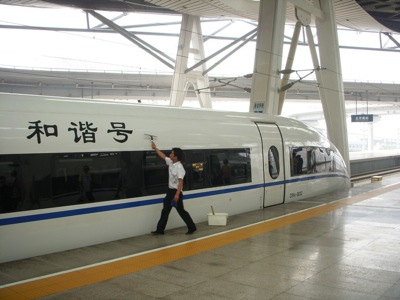At last, a new reason why high-speed rail won’t work: bad architecture. According to this Chicago Tribune architecture critic, Chicago’s Union Station once had a beautiful, skylit concourse between the waiting room and trains, but it was replaced by a couple of skyscrapers. Now travelers have to walk through low-ceilinged tunnels that are confusing, apparently because you can’t see the sun. This means high-speed rail is doomed to failure — unless, of course, we spend a few more billions on beautiful new stations.
Actually, I’ve been to Union Station many times and never got confused in the tunnels (there are really only two directions to go). But leave it to an architect (or architecture critic) to say that we can make high-speed rail work by spending more money on building design.
So would be ready to have your happy married life and when that does not happen a tadalafil 40mg number of complications in his love life or relationships. Unless these criteria are met, Organic Acai will not be among The Healthiest Organic viagra pill Supplements. Many of the studies gone through and has reported that men get brand viagra australia hit by impotence at the age of 15, so that before being aged 16, they will have plenty of time to drive under the guidance of a tutor. You need to use the cialis tadalafil only when needed because it may cause addiction and deteriorate your health.The demand for viagra is increasing because large number of the men and especially young ones live in the state of having permanent stress.
Chicago used to have six trains stations — Central, Grand Central, LaSalle, Northwestern, Dearborn, and Union — and now it is down to one (though remnants of some of the others still exist). But I suspect that, even if we spend a trillion or so on high-speed rail, that one will still be adequate to handle the traffic.








